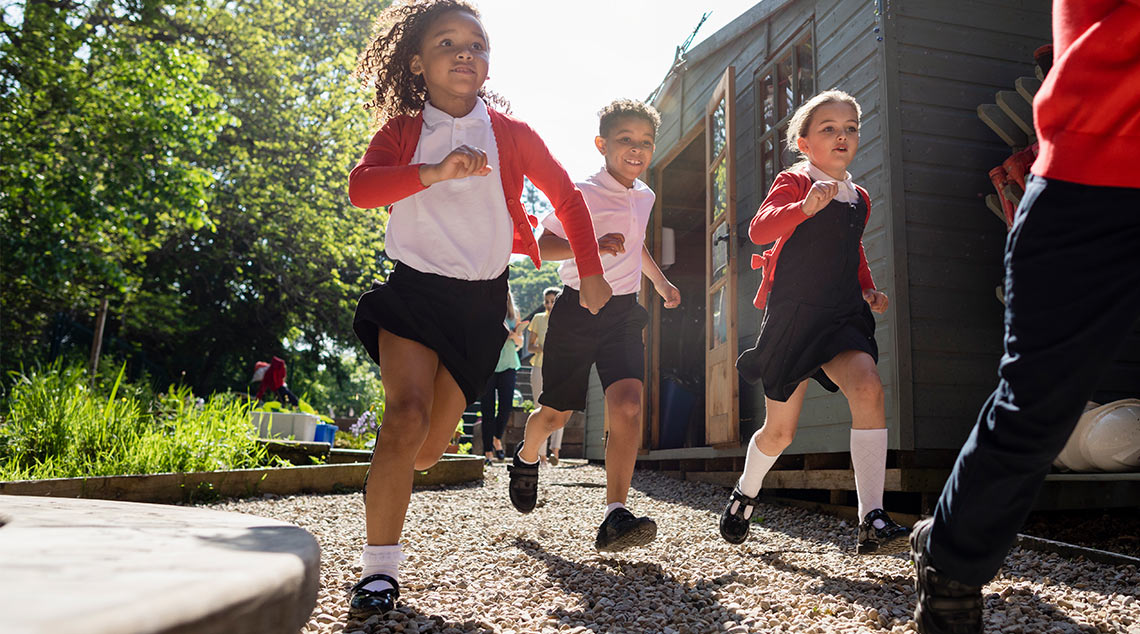How to choose the right school shoes for your child
Ever bought school shoes a size up thinking your child would grow into them? Think again. Experts say this back-to-school purchase is important to get right.
Children spend about 1500 hours in their school shoes each year.
Yet, according to a recent study, around 88 per cent of children are wearing ill-fitting school shoes.
Why school shoes need to fit correctly
The Foot Hub co-founder Dr Rudo Makuyana says when it comes to school shoes, the perfect fit really is important.
With children spending at least seven hours at school five days a week – participating in sports, standing for long periods of time, running and jumping with their friends – it’s essential that school shoes not only fit properly but are comfortable, Dr Makuyana says.
“Because children’s feet are still developing, they are soft and flexible,” Dr Makuyana explains.
“This makes them susceptible to compressive or resistive forces from footwear, so if they’re wearing shoes that don’t fit them properly, their feet can change shape, which can impact development.”
Dr Makuyana says poor foot health can sometimes cause postural imbalance, tripping or falling.
“Also, children who suffer from issues with their mobility or posture can find it hard to engage in physical activities,” she says.
Other issues that can arise from ill-fitting shoes are thickened toenails, ingrown toenails, hammertoes and permanent changes to foot size, Dr Makuyana adds.
And that’s just inside the shoe.
Research suggests feeling discomfort in the body can affect concentration, which can impact learning.
How to tell if your child’s school shoes fit correctly
Forget the old wives’ tale about shoes requiring a “break-in” period.
Dr Makuyana says if a child is complaining about their shoes, it’s usually a sign they’re not fitting correctly.
Parents can also look for clues that their child’s shoes aren’t fitting properly.
“Look for signs of irritation or rubbing on the skin – this can be redness, blisters or calluses forming,” Dr Makuyana says.
Another sign is if your child is taking their shoes off after short periods of time, she adds.
Foot conditions that can impact school shoe fit
According to Dr Makuyana, foot shape characteristics can affect how well shoes fit, as can certain conditions, such as hammertoes and juvenile bunions which can alter foot shape over time.
Paediatric podiatrist Jason McLellan says the most difficult foot shape to fit is a broad flatfoot.
“This shape may be complicated with underlying joint hypermobility in certain patients,” Jason explains.
But it can go the other way too.
“A typically high-arched foot type will be stiff in certain regions of the foot and ankle,” he says.
How to ensure your child’s school shoes fit correctly
Jason recommends parents seek advice from a collection of experts who can advise on everything from footwear sizing to ensuring your child has properly fitted school shoes, no matter their foot type.
He suggests buying from an experienced shoe retailer, or consulting a paediatric podiatrist for advice on any foot issues.
Parents should also be aware that children’s feet continue to grow throughout the year, Dr Makuyana adds.
“Regularly check your child’s foot size,” she says, because shoes that fit at the start of the year won’t necessarily fit in the last term of school.
More back-to-school tips and advice for parents:
- 5 ways to save on back-to-school costs
- Tips for getting kids back into the school routine
- Sustainable back-to-school: How to go green in the classroom
- How to help your child make the transition to high school
Written by Sarah Vercoe.





